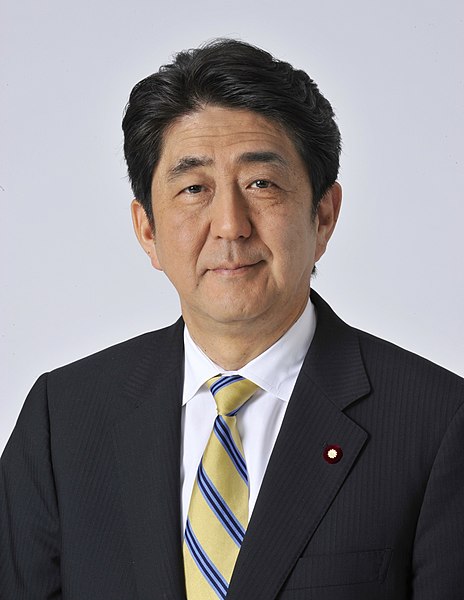Kapil Komireddi on the achievements of Shinzō Abe, “the man who saved Japan”, who served four non-consecutive terms as Prime Minister between 2006 and 2020:

Shinzō Abe, Prime Minister of Japan, 2006-7 and 2012-20.
Official portrait from the Government of Japan under Government of Japan Standard Terms of Use (Ver. 2.0)
To appreciate the achievement of Shinzo Abe, who on Friday announced his decision to resign as Japan’s prime minister because of faltering health, consider the state of the country he inherited. Between 2007, the year Abe vacated the prime minister’s office after serving exactly for a year, and 2012 — when Abe staged a spectacular comeback — Japan had seen off five prime ministers in rapid succession. In fact, with the exception of Junichiro Koizumi, no Japanese prime minister had completed the full four-year term since 1987. A debilitating fatalism had seized Japan: a nation that had risen from the ashes of World War II to become the richest economy on earth after the United States was becoming reconciled to the prospect of irretrievable decline.
Such a posture may have struck some as virtuous. To Abe, it was sacrilegious. The scion of a storied political dynasty, he wanted Japan to become a “nation which can withstand the raging waves for the next 50 to 100 years to come”. Abe nursed a lifelong grievance against what he described as the “terrible” Constitution drafted by the Allied forces after Japan’s decimation in 1945. His greatest political aspiration was to revoke the clause that shackled Tokyo to pacifism as a form of punishment for the sins of imperial Japan. In a land where singing the national anthem with enthusiasm can be seen as a symptom of hawkishness, Abe approached voters with a pledge to “take back Japan”. As a campaigner, he was a populist before the word entered common usage. Once in office, however, he evolved into something altogether different.
The ideological passions that animated his politics were almost instantly subordinated to the higher cause of dispassionate service to Japan. As democracy after democracy fell to populists, Abe, the original populist, travelled in the opposite direction: a rare leader in the democratic world who did not allow partisanship to consume him. Abe did not disavow his conservatism: he aligned it to the challenges before him. The upshot? In the eight years since his return to power in 2012, he presided over the longest period of economic expansion in Japan’s post-war history and the lowest unemployment rate in at least a quarter century. He introduced free preschool and day care for children between the ages of 3 and 5 and created the conditions for the entry of a record number of women into the workforce.
Imparting stability to Japan was the preliminary act. As Tobias Harris reminds us in his important and outstanding new biography of Japan’s outgoing prime minister, The Iconoclast, Abe did not hesitate to dispute and dismantle the dogmas of his own side to pursue policies — such as the guest worker programme — he believed were imperative to securing Japan’s future. He deployed, Harris writes, “his power to defy his conservative allies and open Japan to the world”. At the same time, he strove to be conciliatory with all those who did not vote for him, regarded him with implacable suspicion, and marched against his “militarism” on the streets. This perhaps explains why, despite protests, criticism and scandal, he was able to lead his conservative Liberal Democratic Party to a series of comfortable victories at the ballot box and cement its position effectively as the default party of government in Japan.



